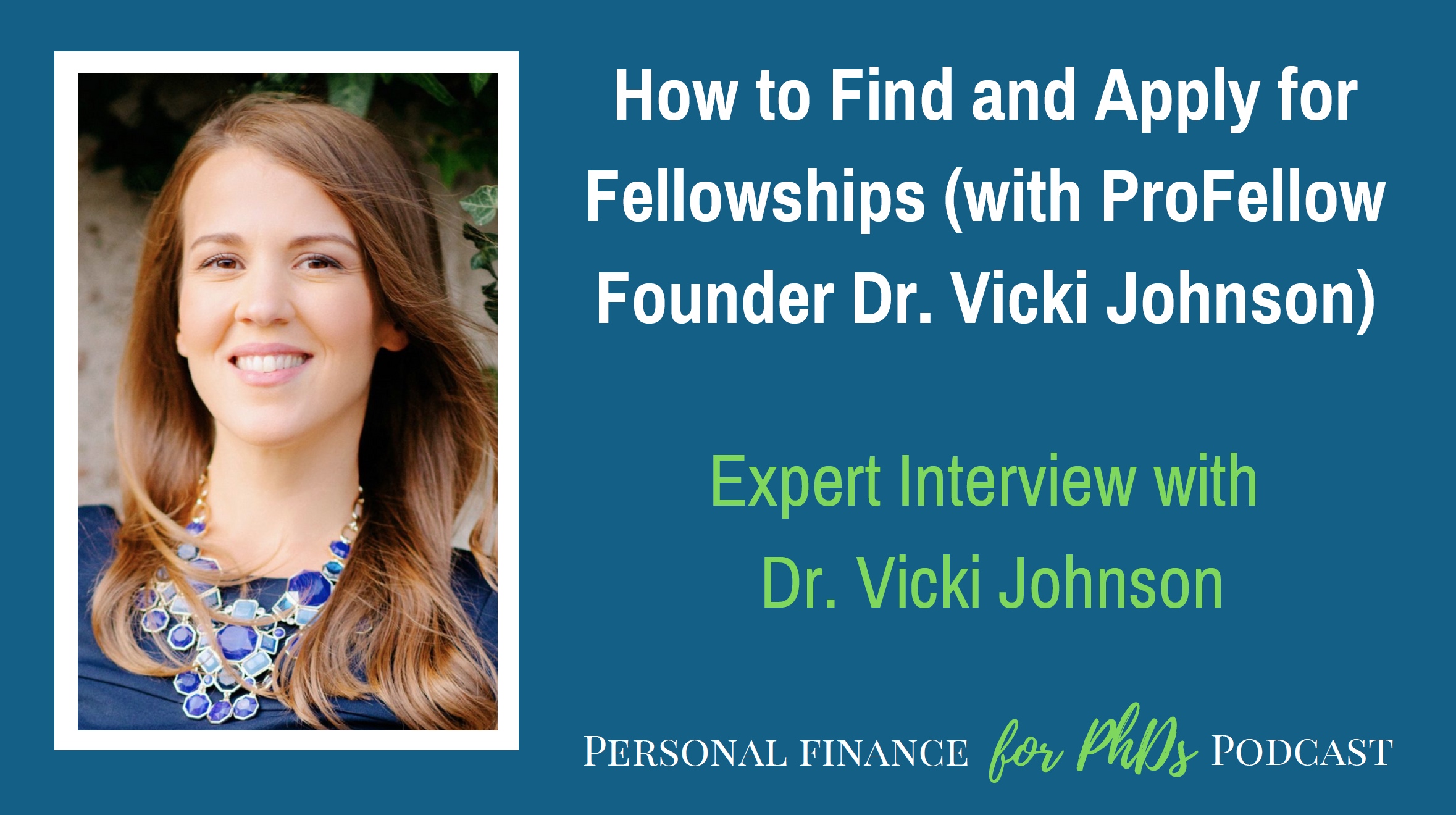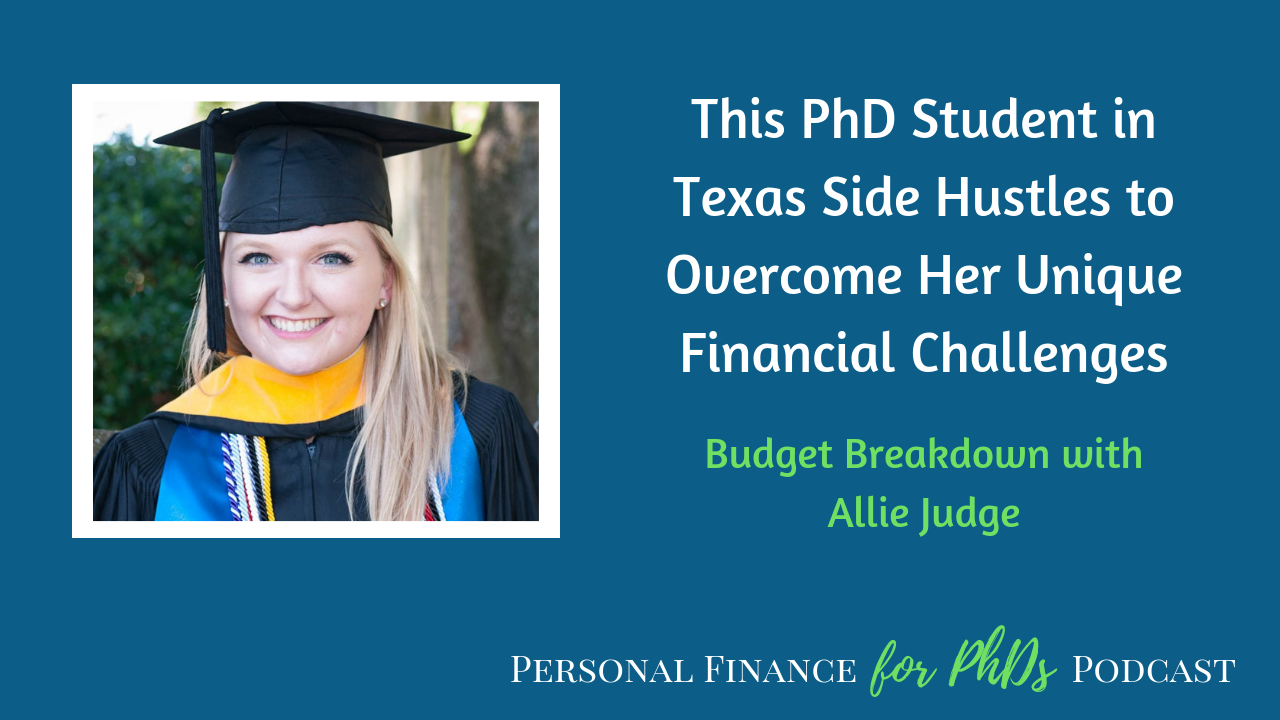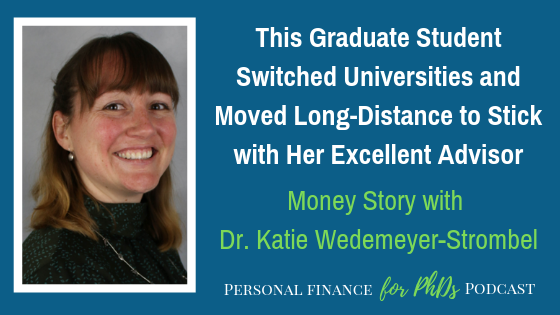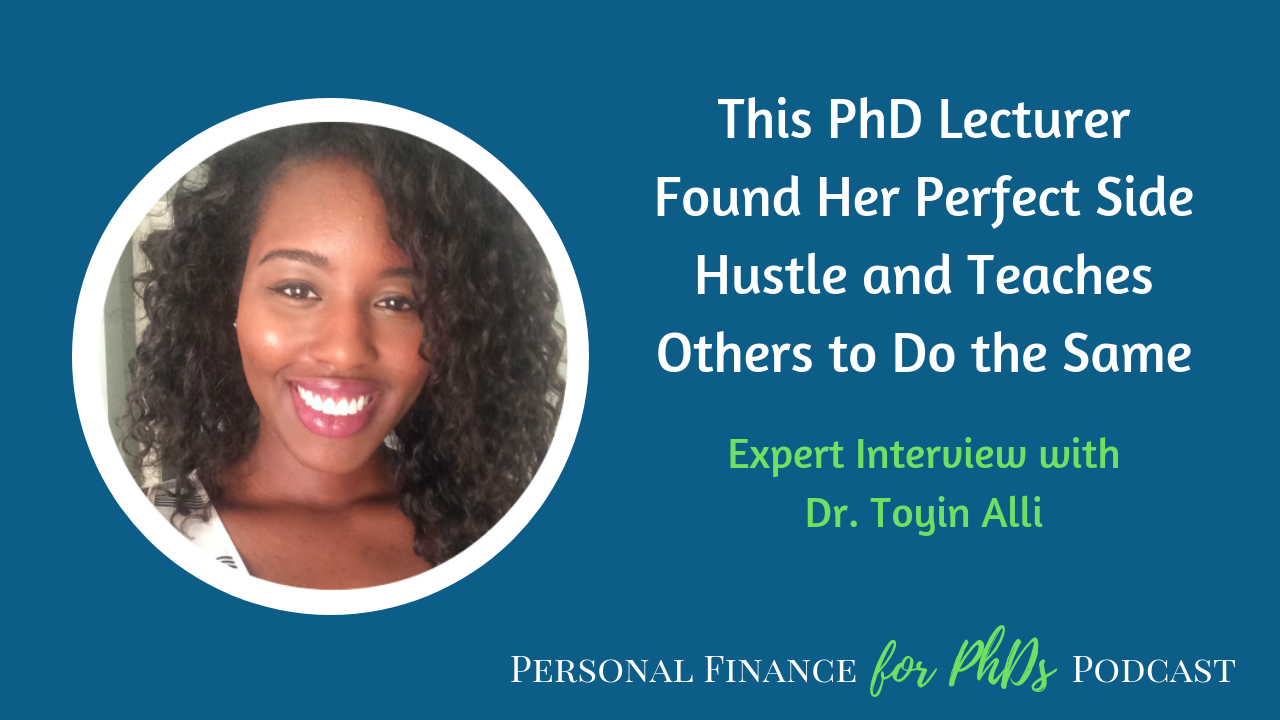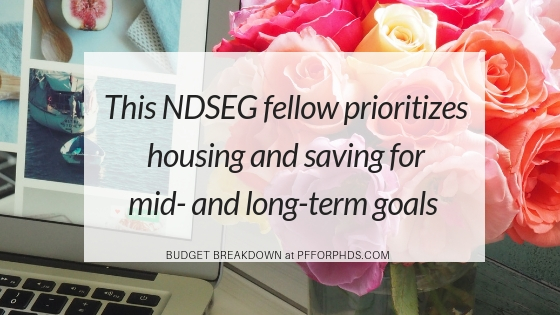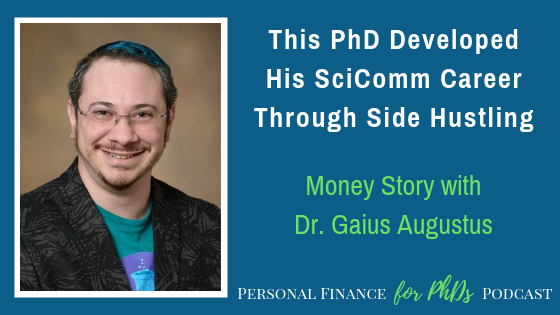In this episode, Emily interviews fellowship expert Dr. Vicki Johnson, the founder and director of ProFellow. After completing multiple professional fellowships and her PhD, Vicki decided to help other fellowship seekers do the same by creating the ProFellow database, which now contains more than 1,200 professional and academic fellowships. Vicki relays the best way to find and apply for fellowships and gives excellent advice for making your fellowship application stand out. Winning a fellowship is the best way to increase your stipend or salary as a graduate student or postdoc, and Vicki shares from her experience some of the other career benefits that fellowships bring.
Links Mentioned in the Episode
Teaser
00:00 Vicki: At the end of the day, these organizations that are outside of the university are funding fellowships as a way to further their social impact mission. So make sure you understand what is the mission of the fellowship organization, why are they funding your research or would want to. Make sure you tie your story to their mission, how you’re going to further their mission. That will make you a more competitive candidate.
Introduction
00:25 Emily: Welcome to the Personal Finance for PhDs podcast, a higher education in personal finance. I’m your host, Dr. Emily Roberts. This is season four, episode three and today my guest is Dr. Vicki Johnson, the founder and director of ProFellow, the leading online resource for academic and professional fellowships. Vicki herself did four professional fellowships in addition to her funded PhD. Vicki and I discussed the best way to find and apply for academic fellowships, and Vicki gives excellent advice on how to boost your applications’ chances of success. Without further ado, here’s my interview with Dr. Vicki Johnson.
Will You Please Introduce Yourself Further?
01:06 Emily: Welcome to the podcast. Today, I am joined by Dr. Vicki Johnson, who’s the founder and director of ProFellow, which is a fantastic fellowships database and just amazing resource for graduate students and postdocs and anyone pursuing fellowships kind of in any way. Vicki and I are going to be talking today about everything fellowships. How do you find them? How do you apply for them? How do you win them? Because she is really the premier expert on this topic in our space. So Vicki, thank you so much for joining us today.
01:41 Vicki: Thank you for having me!
01:42 Emily: Can you tell us just a couple words about your background? You know, you have a PhD and how you got started with ProFellow.
01:50 Vicki: Sure. I actually started out in the fellowship world as a professional. I did four professional fellowships in the field of policy and I did some in the U.S. and some abroad. As I was progressing through my career, I did my Masters and then ultimately did my PhD, which was actually just a serendipitous thing that I did while I was on a professional fellowship. Then I had a major career transition about five years ago and decided to teach other people about how to find and win fellowships through ProFellow. And now I’m fully focused on that as my thing. I love fellowships, and I’m excited to tell people more about them.
How Do You Define “Fellowship”?
02:27 Emily: Yeah, it sounds like you have a ton of personal experience as well as your extensive professional experience. So yeah, let’s get started with that– with a pretty basic definition. What is a fellowship? Because that term can mean a lot of different things depending on who you’re talking to. So how do you define it?
02:45 Vicki: So for the purpose of our website, we sort of decided that the definition would be “short-term funded opportunities to do something exceptional.” So there’s a lot of funding opportunities, professional development opportunities, graduate school funding opportunities that aren’t necessarily called fellowship and title, but they do provide funding. They are time-limited, so they’re usually anywhere from a couple of weeks to a couple of years in length. And they provide you the resources and the network that you typically wouldn’t get in either a job or even just the regular scholarship. So it’s a pretty broad definition. People typically have heard of postdoctoral fellowships or they’ve heard of scholarships and things. But it’s a really very broad definition. So there’s quite a few professionals fellowships and also a whole other world of academic fellowships.
03:36 Emily: Yeah. And so I think today we’re going to be focused mostly on those academic fellowships, the ones that will pay your stipend, maybe pay some tuition and fees, pay your salary if you’re at the postdoc level. But just so people are aware, your site covers much more than that. And in fact, I did a policy fellowship myself after I finished my PhD. It was the, the Mirzayan Fellowship in DC. And that’s something that I wrote about for your site because that fellowship is one among the many others that you cover. But we will be focusing today on those academic fellowships. But just for anyone who’s thinking about another fellowship opportunity, still go back to ProFellow because it’s going to be an amazing resources for you as well. So with these academic fellowships, how do you go about finding them? We’ve all heard probably of the standout one in each of our fields, whatever that is, but there are going to be a whole lot more, too. So how do we go about finding these fellowships?
How to Use ProFellow to Find Fellowships
04:26 Vicki: Well here I’m going to do a big plug for the site profellow.com because we have an enormous database of fellowships at both the professional and academic level. So if you sign up for free to use ProFellow, you can create an account and come in and search our huge database. And within it there are filters. So you can either select fellowships for doctoral study, graduate study, which would include masters programs and postdoctoral research in addition to professional, even summer fellowships for students. You can narrow it down that way and then you can also narrow them down by discipline, your citizenship, years of work experience. I would also say use certain keywords. So let’s say you’re working in conservation. You can use that as a keyword in the database. But for the most part, I tell people to keep their search filters quite broad because there are a lot of fellowships that are multidisciplinary in nature.
05:18 Vicki: So even if it’s not specifically a conservation fellowship, there could be a whole range of fellowships that you can do a conservation related research project, or dissertation research or whatever, with the fellowship because it might be a broader social sciences fellowship or STEM fellowship. So keep your search broad and take the time to look through. We purposely made the listings so that they’re really brief and easy to skim and you can bookmark opportunities. And then you can also from the listing go to the website to learn more. And honestly, I only say this because it’s true. We are a better place to look for fellowships than, say, on Google. If you Google these things, you’ll come up with all sorts of stuff that may or may not be relevant to what you’re looking for. And it’s very difficult to find fellowships on Google or even just through word of mouth. So, use the website. It’s free, and it’s a great way to also find out about new opportunities that are coming up every year.
How Do You Maintain the ProFellow Database?
06:12 Emily: Yeah, thank you so much for that. I’ve been referring to ProFellow for many years as a key database for all of this, and it’s exciting to hear what all you do. I’m actually wondering how you find all these fellowships. Are you well-known enough that these new programs just e-mail you when they have something new coming up, or how do you maintain this database?
06:31 Vicki: Oh, good question. Well, back in the day, nobody knew who we were. But now that we’ve been around since 2011, we have a brand name in the fellowship industry. And honestly, some of the larger categories of fellowships– like, let’s say you’re Googling journalism fellowships or mid-career fellowships or postdoctoral fellowships– ProFellow will rank some of our articles at the top of the list. There are other keywords that we’re still fighting for to get to the top of the list. But if you’re listening to this and you’ve heard of us, you’ll see that. And we’re also very active in the fellowship industry. I just came back from a conference in DC, the Impact Fellowships Summit. So, our name is growing. We’re still a bit skewed toward, U.S. Citizens, U.S. Students, or people coming to the U.S. in terms of what funding is out there. But we are also growing globally. So we are getting more and more fellowships for non-U.S. citizens, international students, or people from other countries going to non-U.S. countries. So, it’s growing. So, there are more and more things. The more you share us with your friends and your colleagues and your professors, the more well-known we will be and even more fellowships we will list.
Applying for Academic Fellowships
07:40 Emily: Yeah, wonderful. Okay, so we have a grad student or a postdoc or an aspiring one of those categories who wants to win a fellowship. What’s the application process like for these academic fellowships?
07:54 Vicki: Yes, well, if you have never applied to a fellowship before, you’ll see that actually it can be similar to applying to graduate school. Usually, there’s a personal statement, recommendation letters, short answers that you have to respond to. In many cases, for the academic or research-related fellowships, you might even have to put in a research proposal. That could be anything from a really brief research proposal to something that’s really long and intense. So, it’s different for every fellowship. I say, get started early. The first thing you should identify is: what do you need to include in the application? I think if you’re in graduate school, you’ll be used to this process of writing a personal statement and talking about your goals, what you want to achieve in your research, so that experience will help you as you pursue the fellowships.
08:42 Emily: So I liked that you drew parallels between the process of applying to graduate school and the process of applying for fellowships. In fact, sometimes even the timing of those things can come together. Right? Do you find that fall is a heavy fellowship season or is it kind of spread out around the year?
08:58 Vicki: Oh yeah, that’s a very good question. Yeah, typically it’s just like the graduate school process where it’s based on the academic year. So you do want to look for fellowships as early as possible. Deadlines tend to fall anywhere between October and January. That’s kind of a typical, what we call, fellowship season. And so if you’re looking for funding, it’s often not very easy to get a fellowship that’s going to fund your next semester right away or even in a few weeks or a few months. Usually, you’re looking a year out. So that’s why, let’s say you’re entering your coming year– your academic year. The fellowships that you apply to this fall typically will fund your following academic year. So yes, keep that in mind. It’s an important kind of timeline that people should be aware of when they’re looking for fellowships.
How to Get Ahead of Fellowship Deadlines
09:42 Emily: Yeah. This is definitely something you need to plan ahead for. Can you tell me a little bit more about, not necessarily the timeline about the fellowship applications cause presumably they just have a due date, but all the various components that could go into an application. Different kinds of essays, letters, just stuff that you need to be working on. Like what do you need work on well in advance of these deadlines?
10:03 Vicki: Well, I think it’s really important if you’re looking for funding for academic research, say your dissertation, to do field work and that sort of thing. A lot of times what the fellowship organizations want to know is they want to know that you’re going to be successful. So when they fund you, they want to know that your project can be successfully completed in the time period of the fellowship with the resources available with the funding available.
10:25 Vicki: So if you’re applying for, say, like a summer fellowship that is only three months in length. That’s not enough time to do your entire dissertation. You’re probably just doing one element of it. So make sure that your research proposal, if that’s part of your application, really reflects what the fellowship is offering and what can be accomplished in that. Because feasibility is very important. It doesn’t matter how great your ideas is; if it’s not feasible, it won’t make it to the next stage. And in the personal statement too, they want to see more about why you’re passionate about your research topic. What are your longterm goals? Often people forget to put in what their career goals are or what they’re going to do after the fellowship. That’s really important. Make sure to include those because at the end of the day, these organizations that are outside of the university are funding fellowships as a way to further their social impact mission. So make sure you understand what is the mission of the fellowship organization, why are they funding your research or would want to. Make sure you tie your story to their mission, how you’re going to further their mission. That will make you a more competitive candidate. So those are, I would say, the main things to include.
Commercial
11:29 Emily: Emily here for a brief interlude. Through my business, I provide seminars and webinars on personal finance for graduate students, postdocs, and other early career PhDs for universities, institutes and conferences, associations, et cetera. I offer seminars that cover a wide range of personal finance topics and others that take a deep dive into the financial topics that matter most to PhDs like taxes, investing, career transitions, and frugality. If you are interested in having me speak to your group or recommending me to a potential host, you can find more information and ways to contact me at pfforphds.com/speaking that’s p f f o r p h d s.com/speaking. Now back to the interview.
More Advice for Fellowship Applicants
12:18 Emily: Yeah, so it sounds like there are some of these elements, you know, essays that you can reuse much of for several different applications that you might have. But some things are definitely going to have to be tailored to the specific organization.
12:30 Vicki: Absolutely. My mantra is that the amount of effort that you put into your application directly correlates with your likelihood of success. So, I know people don’t want to hear that, “Aw, man, I have to put a lot of time into my application,” because on top of it you’re studying and you’re working, you’re doing other things. But it’s true that when you’re focusing on an application, start it as early as possible because then you can break out times on your calendar to be able to focus just on the application and also make sure to tie in your professors, your mentors. They’ve been doing this a long time. Many of them have won multiple fellowships, multiple grants and funding awards. Don’t do this in a little silo by yourself. Make sure you tell your advisors, your professors that you’re applying for the fellowships because they could have some great insights. They may even be connected to the fellowship in some way you might not be aware of. So, be sure to reach out for advice from those groups, too.
How to Stand Out as a Fellowship Applicant
13:29 Emily: Yeah, we’re definitely getting into some good advice here for fellowship applicants. These fellowships presumably get hundreds, thousands, tens of thousands of applications. What’s going to really make a candidate stand out and make a fellowship application look very, very strong?
13:48 Vicki: Yeah. The two main things, especially with the academic research, if you are applying to a fellowship that is being funded by a foundation, a nonprofit government agency, NGO, whatever that is, make sure that you understand the mission of the organization. I think I mentioned this already, but a lot of people sort of skip over this part. They are so wrapped up in explaining their research and why they want to do it that they don’t really tie why their research aligns with the mission of the organization. So it’s very, very, very important that you touch on that mission. They may not ask you how you feel about their mission. They may not ask you how it ties to their mission. But when you think about the other group, the other person–the investors, as I like to call it–they’re investing in you. Make sure you make a really clear reason as to why they should invest in you because they have a purpose for the fellowship and you have a purpose for your research and you’ve got to make sure they tie together.
14:47 Emily: Yeah. Excellent. Any other advice for making an outstanding fellowship application, but let’s say also just an outstanding fellowship applicant? What can you do in your life that will go on your CV or that people will be able to write about in your letters that will help you stand out?
Fellowships: More than Just the Fellowship
15:05 Vicki: You know, I think some people get a little bit intimidated by the fellowship process. Like you said, there’s hundreds, thousands of applications and it can be really disappointing to get a rejection letter from a fellowship that you worked really hard on the application on. But just keep in mind that the effort that you put in, your professors and your supervisors are watching as you do this. And so even if you’re rejected, I’m telling you, there’s something extra that you get. I don’t know what the right word is, that will help you as you go further in your career. So it’s not all for not if you don’t get into the fellowship. But also, if you do get into a fellowship, make sure to take advantage of the wider resources that the fellowship offers.
15:49 Vicki: There’s usually an alumni network. They’re connected to high-level organizations and leaders in your field, both in the U.S. And globally. Take full advantage of every opportunity that the fellowship provides beyond just the funding that they’re going to give you. Because we all know that when it comes to career tracks that, these days to get a job, you have to be in the know. You have to know somebody, you have to be an influencer, you have to have personal connections. And these are things that are very valuable that you can get out of the fellowship. But also, these personal connections that you make are also very valuable when you’re applying to fellowships, too. So as you’re applying, reach out to alumni, reach out to professors and mentors, get as much advice as you can. All of this, little bit incrementally, adds to your success long-term.
How Often Should I Apply for Fellowships?
16:37 Emily: Yeah, I’m really glad you brought up the other benefits of winning a fellowship aside from the funding itself. So I had a friend in graduate school who was a Hertz Fellow. I was blown away by the number of networking events and opportunities to meet potential employers that that fellowship provided. It was truly outstanding, and I don’t know that there are that many others that go to that degree. But certainly as you said, there are alumni networks that you can be connected to. Really, it is another way of networking. A very, very good, strong networking connection to have won a fellowship. One other thing I wanted to ask you about: another guest that I just had on who was a fellowship applicant said something along the lines of, “it’s sort of a numbers game.” You just need to apply to a lot of stuff and hopefully, here and there you’ll win something. But really, as you said, each fellowship application takes a good amount of time dedicated to it. Would you say that people should be applying to a few fellowships every year? Not necessarily like full, “it’s going to pay everything” fellowships, but just some kind of award that they could go up for.
17:42 Vicki: To be honest, I’m not really in the mind frame of the numbers game. I’ve heard people say that. I’ve heard multi-award winners say that. As as I said, I have won multiple fellowships, but for each of them I was sort of applying for them one at a time. When you’re applying to graduate school or looking for graduate funding, often you do have to apply for a few at a time in the hopes that you get one of them. But I don’t know necessarily that it’s a numbers game where you just throw out a million applications and hope that one sticks, because I do think that approach could also distract you a little bit from really putting in the focus that you need to create a strong application. I would say just make sure that you’re a good fit for the programs that you’re applying to.
18:23 Vicki: If it really is a stretch, is your research actually furthering the mission of the organization? If it’s really a stretch, it might not really be worth applying to. Whereas if you find two or three fellowships that you think you’d be a really good candidate for, go for all three, because it will be worthwhile. And I should also say people should look into summer fellowships too, which are just kind of brief summertime fellowships that are specifically for students. Some of them are professional in nature. Some of them are for academic research as well. But even those little summer fellowships give you those professional networks and experiences that you can’t get otherwise and they’re very, very good for your post-graduation career goals.
Final Advice for Fellowship Applicants: Be Yourself
19:06 Emily: Yeah. Thank you for your insight on that. I’m going to ask you a little more about ProFellow in a moment, but just before we get there, any final words of advice for fellowship applicants?
19:17 Vicki: Oh, just be yourself, too. I think people worry too much about telling the organization what they want to hear. And I do teach people about the social psychology of really understanding the mission and making sure that you link your work to that. But at the same time, to be your authentic self is really valuable. There are people reading these applications. They’re not robots. They’re people. So, tell your story, your authentic story, and really be yourself. And if you get thrown a hard question, answer it as honestly as you can. If it was meant to be, it will be.
Additional Resources at ProFellow
19:51 Emily: Okay. So tell us a little bit more about ProFellow. You’ve talked about the database a little bit already, but I know you have a lot more stuff going on aside from just, this is where we can search for fellowships.
20:00 Vicki: Sure. At profellow.com, we do have this huge database of funding opportunities that you can search. We also do articles featuring fellows and ask them about their fellowship experience and their application tips. So it’s a great place to hear what fellowship alumni say about how they made their application stand out, what they did to get above the hundreds of thousands of applicants. We also do listicles, we do articles. Specifically, “10 fellowships in policy,” “25 dissertation fellowships.” So we have a lot of resources that help you find the fellowships and get the tips. We also have workshops, usually on a monthly basis, on everything from creating a great personal statement to creating an exceptional research proposal.
20:45 Vicki: So if you’re on our mailing list, you’ll be alerted to those things as well. And actually, next week and two weeks from now I’m doing a Fulbright applicant mastermind for people that are applying for the international Fulbright awards. So that’s something that if you’re considering as an enrolled student for either your field work or just to have an international experience, a Fulbright is something you can consider. But yeah, we have all sorts of stuff. We even have ProFellow academy, which is another platform for free advising. So you can ask questions, connect with fellowship alumni, have office hours. So yeah, we’re just chockfull of resources. Most of it’s free. So, sign up, get on our mailing list and then you will have access and also get alerts about new fellowship opportunities.
How to Connect with ProFellow
21:26 Emily: Yeah, that sounds amazing. I’m actually trying to think, “oh, is there any fellowship that I could apply for? Does that fit in my life right now?” One of those professional fellowships that you mentioned. So profellow.com, is that the best place to go? Or are you on social? Any other contact information you want to share?
21:41 Vicki: Oh, yes. You’ll find us also on Facebook, Twitter, LinkedIn. But really just go to profellow.com. That’s the place to be. Sign up right on the homepage and that’ll get you right into the database. You can also search our site for all the other great stuff. Be on the lookout for our biweekly newsletter, ProFellow Insider.
22:00 Emily: Yeah. Thank you so much, Vicki for joining me on the podcast today and sharing your expertise with us.
22:06 Vicki: Thank you. Thank you for having me.
Outtro
22:08 Emily: Listeners, thank you so much for joining me for this episode. Pfforphds.com/podcast is the hub for the Personal Finance for PhDs podcast. There, you can find links to all the episode show notes, a form to volunteer to be interviewed, and a way to join the mailing list. I’d love for you to check it out and get more involved. If you want to support the show and my business, please go to pfforphds.com/helpout. There are plenty of ways to do so without laying out any of your own money. See you in the next episode! And remember, you don’t have to have a PhD to succeed with personal finance, but it doesn’t hurt. The music is Stages of Awakening by Podington Bear from the free music archive and is shared under CC by NC.
